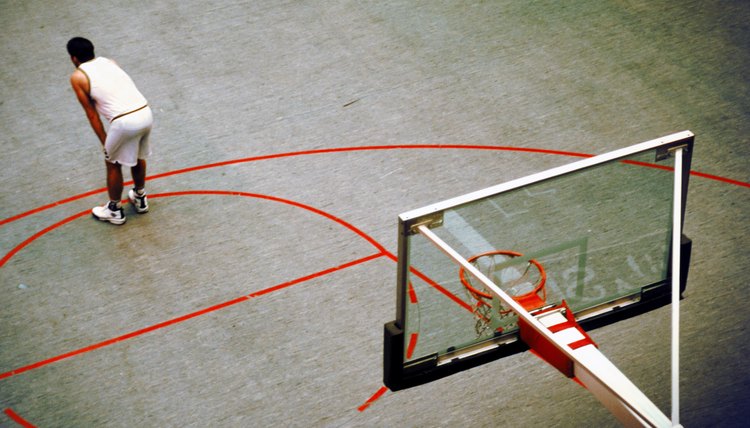Energy Systems Used in Basketball

Three energy systems -- commonly referred to as metabolic pathways -- are responsible for the chemical reactions within cells and tissues during exercise and sports. These energy systems include the phosphagen, glycolytic and oxidative pathways. For a basketball player, all three of these energy systems are essential during competition. Understanding all of the energy systems and how they work together is important for basketball training and overall performance on the court.
What Comes From Where
The phosphagen and glycolytic pathways are considered “anaerobic” while the oxidative pathway is considered “aerobic.” During a basketball game, about 85 percent of the athlete’s energy comes from the phosphagen system, followed by about 15 percent from the glycolytic system and a small percentage from the oxidative system. The phosphagen system dominates high-powered plays. The glycolytic system is responsible for moderate-powered activities, and the oxidative system takes care of low-powered plays.
Phosphagen for Rebounding
For basketball plays lasting between 10 and 30 seconds, the phosphagen system uses adenosine triphosphate-creatine phosphate for energy. The ATP-CP provides quick bursts of immediate energy. Sample plays include accelerating and running up and down the court, changing directions, rebounding, jump shots and playing defense. This energy system requires about 30 to 90 seconds of rest for a full recovery due to the absence of oxygen during the delivery of energy.
Glycolytic for Fast Breaks
Plays lasting between 30 and 60 seconds require the glycolytic system to supply energy. During this energy production, the body draws on anaerobic glycolysis to release ATP and produce lactic acid. The energy source can be used for moderate-intensity activities but requires about 60 to 240 seconds for a full recovery. Sample plays using the glycolytic energy system include fast breaks, full-court defensive pressure or offensive plays.
Oxidative for Success
The oxidative energy system may be the least-used system but it is one of the most important for basketball success. The oxidative system, or aerobic system, is essential for continuous play during the course of an entire game. While the phosphagen and glycolytic systems are releasing ATP and lactic acid, the aerobic and oxidative systems are replenishing these energy stores that improve the recovery times for those energy systems.
References
Writer Bio
Based in Nebraska, Jeremy Hoefs began writing fitness, nutrition, outdoor and hunting articles in 2006. His articles have been published in "Star City Sports," "Hunting Fitness Magazine" and RutWear field journals, as well as on the Western Whitetail website. Hoefs graduated with a Bachelor of Science in exercise science from Nebraska Wesleyan University.
